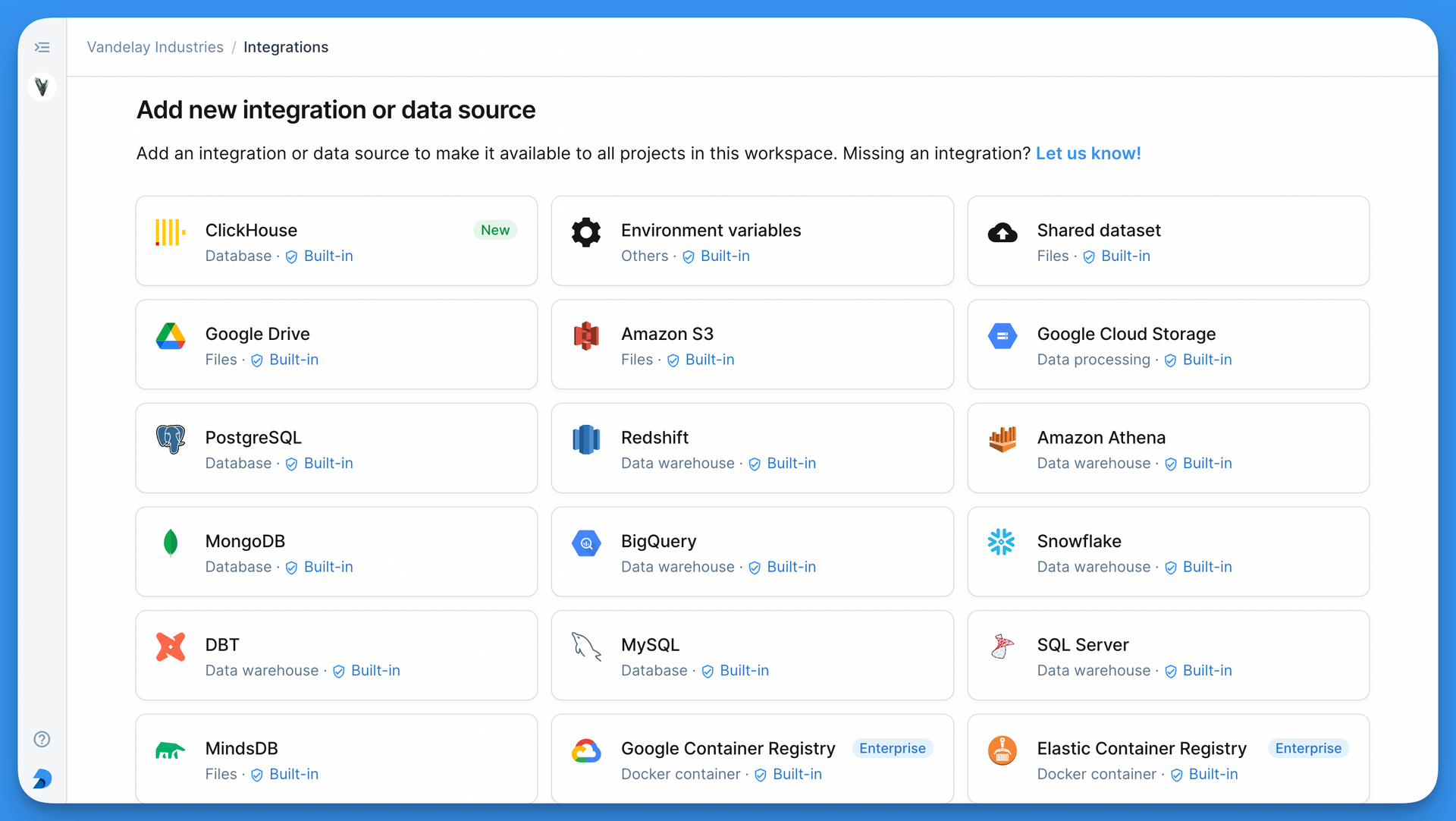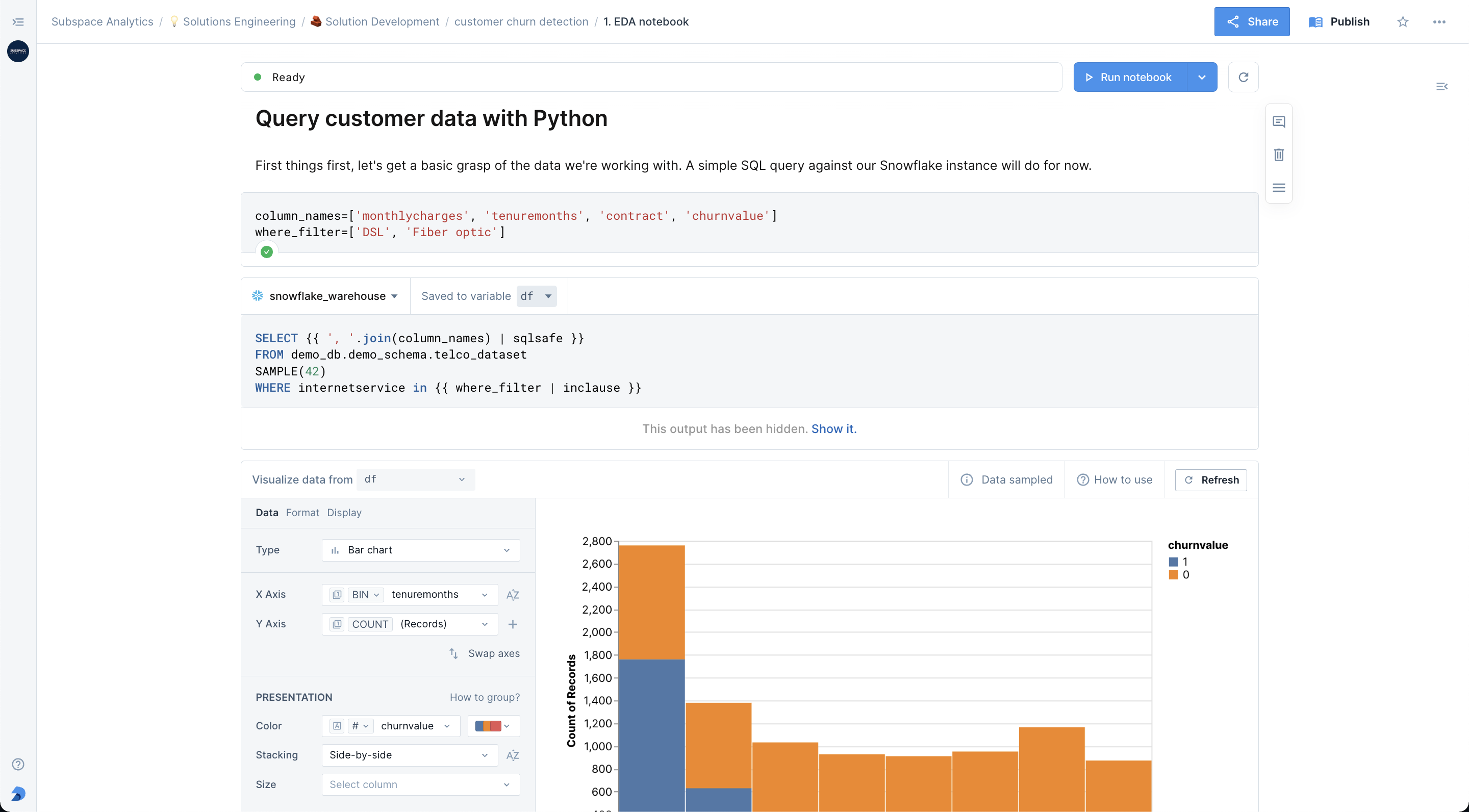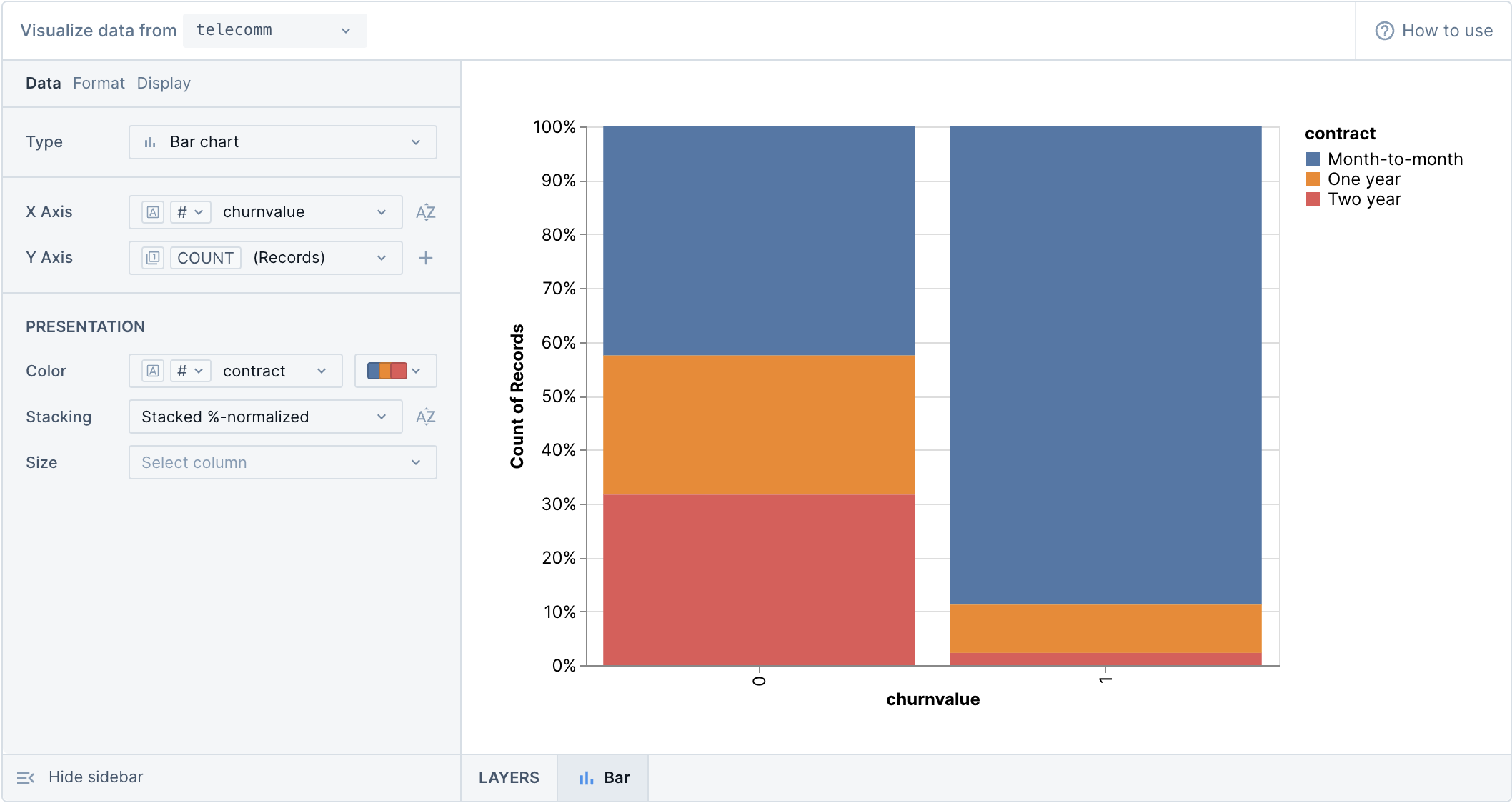Speed is the name of the game when it comes to data exploration.
Investigating, experimenting, prototyping — everything that comprises exploratory programming calls for agility.
Let’s look at how teams use modern data notebooks to simplify data exploration and speed up time to insight.
Integrate effortlessly
Ask any data professional to list their biggest pains in the neck. Odds are connecting to data sources will be near the top.
We’ve all had a notebook with a database connection string in the first cell for all to see. So how should you share such a notebook?
If you send it with your credentials in plain sight, you’ll be going against your security policies. If you remove the cell, your teammate won’t be able to connect seamlessly to your data. It’s an all-too-common pickle.
Cloud-based notebooks solve this problem. They provide plug-and-play integrations with the modern data stack: Snowflake, BigQuery, PostgreSQL, MondoDB, and many other database services. They also encrypt and securely store user-defined secrets (e.g., API keys, database connection details, etc.) in a way that permits collaboration.
This means you can share a link to a notebook and your teammate can reproduce the analysis with a single click (security policies respected!).

Today’s data notebooks also solve the problem of environment setup. A lack of shared data sources is painful enough on its own, but not having equivalent environments for everyone interacting with data opens up a whole different can of worms.
We’ve all been there, right? You share a “squeaky clean” analysis with a colleague and they can’t even run your notebook without getting an error.
The problem? They’re running snowflake-snowpark-python==0.7.0 and you’re using snowflake-snowpark-python==1.0.0. Oops, no wonder that UDF won’t accept a list of literals.
Or perhaps you’re a huge fan of the walrus operator (:=) and your teammate is still on Python 3.7. Oops again.
This causes friction — and the timesuck of investigating, debugging, configuring environments, installing new packages, and so on.
Modern data notebooks provide portable, shareable configurations, making those timesucks a thing of the past. It’s one of the many reasons companies such as Webflow rely on data notebooks for exploratory analysis.
“Currently, I have a team member on leave,” said Webflow’s Senior Manager of Data Science & Analytics Allie Russell. “Deepnote allows me to look into her work without having to understand her environment or running into a bunch of errors, and that’s pretty powerful.”
Master multiple languages
There’s no one language that rules them all — there are just different languages for different jobs. But too many tools limit your available options, either forcing you to use multiple tools or deal with a less-than-seamless process. Square peg, meet round hole.
With modern data notebooks, teams can write and run SQL queries and return them as pandas DataFrames, or even pass Python variables, tuples, and functions directly into a block of SQL. Interoperability is the word, making it easy to maximize the value of SQL and Python together.

And with support for many programming languages — including R, Julia, and more — team members who are more comfortable using one over the other don’t have to worry about learning a new language just to analyze data and effectively collaborate with their team. Just ask Webflow’s Allie Russell.
“Our team can conduct analyses in the language most comfortable for them, which makes it accessible to and powerful for everyone,” Russell said.
Code intelligently
IDEs come with plenty of bells and whistles to help data professionals work faster and smarter. Modern data notebooks are no different.
Teams will find code intelligence features that help them spend more time uncovering insights and less time memorizing function signatures and method names. Features like autocomplete, function definition and parameter names, and go-to definitions are especially helpful for newer data professionals.
Automations, shortcuts, and helpful hints make it that much easier to speed up exploratory analysis. That’s why organizations such as Sports Data Solutions (SDS) consider modern data notebooks their go-to tools for data exploration.
"Deepnote is unrivaled in its potential for enabling data teams to be more productive,” said SDS founder and software developer Dan St. Paul.
Visualize with ease
Visualizing data isn’t just part of data exploration — it’s essential to helping stakeholders make decisions based on the results.
It’s also a common roadblock (just ask any data professional who’s ever had to write code to create a scatter chart colored by categorical labels on a log scale, or a histogram with just the right amount of binning, or a bar chart with a labeled line overlaid, or a, well, you get the point).
Modern data notebooks allow users to whip up a wide range of business-critical visualizations right alongside their code snippets and rich text narratives — no code necessary.
Point-and-click data visualization helps even non-technical teams quickly create beautiful, actionable charts from pandas DataFrames. And it saves data professionals from the “fun” of writing code that does the same thing (but takes longer).

Of course, if power users want to view and edit the code responsible for the chart, they can do that too. We all like an escape hatch!
Creating highly complex visualizations in a business intelligence tool takes time, and often doesn’t make sense during the exploratory analysis phase. Teams use modern data notebooks to bridge the gap. Their no-code visualizations are designed to satisfy the majority of common use cases, minus the mental effort.
“There’s Snowflake and there’s our business intelligence tool — which shows the final version of the project — but until Deepnote, there wasn’t anything in between,” Webflow’s Allie Russell said. “Deepnote enables us to bring people into the phase of data science that’s all about experimentation, helps them understand our processes, and encourages folks to leverage data science in even more ways.”
Data professionals are explorers. They need tools that will help them navigate uncharted waters and dive deep into their datasets — quickly, intelligently, and collaboratively.
That’s why leading data teams use data notebooks to get it done.
Start powering data exploration with Deepnote
Get started for free to see how Deepnote helps teams accelerate data exploration.